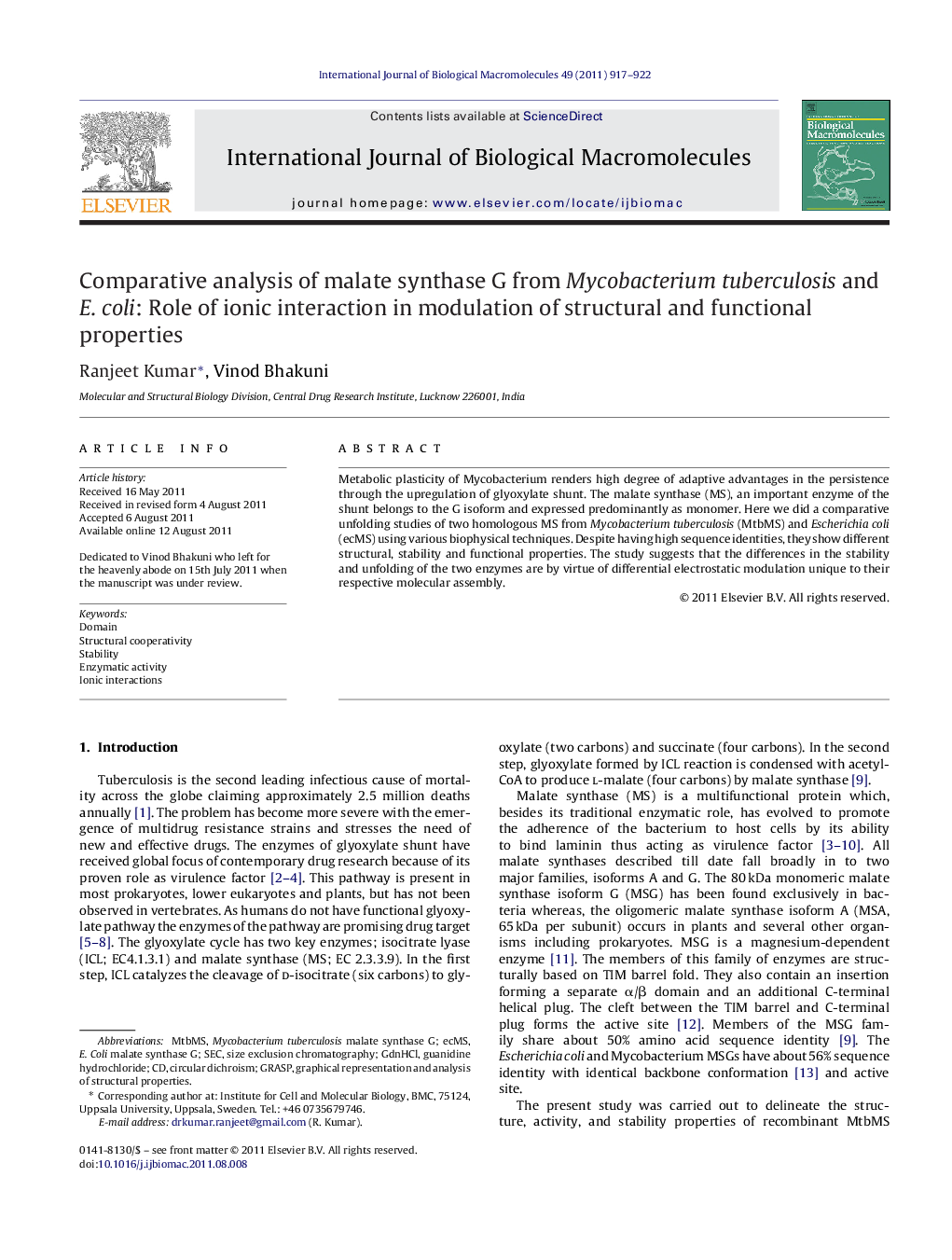| Article ID | Journal | Published Year | Pages | File Type |
|---|---|---|---|---|
| 8335263 | International Journal of Biological Macromolecules | 2011 | 6 Pages |
Abstract
Metabolic plasticity of Mycobacterium renders high degree of adaptive advantages in the persistence through the upregulation of glyoxylate shunt. The malate synthase (MS), an important enzyme of the shunt belongs to the G isoform and expressed predominantly as monomer. Here we did a comparative unfolding studies of two homologous MS from Mycobacterium tuberculosis (MtbMS) and Escherichia coli (ecMS) using various biophysical techniques. Despite having high sequence identities, they show different structural, stability and functional properties. The study suggests that the differences in the stability and unfolding of the two enzymes are by virtue of differential electrostatic modulation unique to their respective molecular assembly.
Keywords
Related Topics
Life Sciences
Biochemistry, Genetics and Molecular Biology
Biochemistry
Authors
Ranjeet Kumar, Vinod Bhakuni,
